Table of Contents
You Don’t Know What Love Is

Lennie Tristano – Who was Lennie Tristano, the Jazz Master (1919-1978)?
Lennie Tristano was born in Illinois, Chicago in 1919 “almost blind in the bosom of a family originally from southern Italy, he began his piano studies with his mother, an opera singer and pianist. At the age of ten he enters a school in Chicago where he studies music theory, alto and tenor saxophones, clarinet and violoncello, and at the same time directs the school orchestra”.
According to the text that accompanies the aforementioned album, at this time Lennie Tristano also played trumpet, guitar and drums. He later starts higher music studies and gets a ‘Bachelor of Music’ in just two years. It is after his studies when he begins to be interested in Jazz and musical improvisation in general.
Download the best Jazz Transcriptions and sheet music from our Library.
His influences, apart from classical music (especially Bach), can be summed up with the following names: Art Tatum, Bud Powell, Earl Hines Lester Young and Charlie Parker. In 1943, he combined his career as a musician with teaching, for which he should also be considered an important ‘Jazz Educator’ (Jazz teacher).
Later he even founded his “New School Of Music” in New York. At that time he coincides with Lee Konitz, alto saxophonist, also originally from Chicago, with a unique style that will play a very important role in his future formations. In 1945, he collaborated with the formation of Earl Swope (trombonist) and Woody Herman (clarinetist, band-leader and singer), moving to New York in 1946.
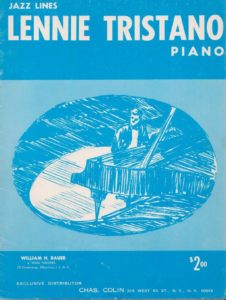
From his circle of students and colleagues an extraordinary sextet crystallized in 1948: Lee Konitz (alto sax), Warne Marsh (tenor sax), Billy Bauer (guitar), Lennie Tristano (piano), Arnold Fishkin/Harold Granowsky (bass) and Denzil Best (drums).
The group worked closely together for a year, something unusual, until recording Crosscurrent for the Capitol label in March and May 1949 in New York.
What is special about Lennie Tristano’s style is a very linear approach to his improvisations. Until now, melodic improvisation in Jazz was mainly based on playing what the harmonic base pre-established (the vertical part of the music). In other words: melodic instruments played piano or guitar chords in the form of successive notes (arpeggios) to create melodic lines.
Tristano tries to give the melodic line itself more importance, so that it could also exist without harmony. His goal is to avoid the repetition of ideas and to improvise ‘for real’ without the use of ‘licks’ (pre-established and pre-rehearsed melodic fragments). Later, on his album “Lennie Tristano” from 1955, he includes two songs in which he practically does not play any chords, only a great melodic line, a particular thing for a pianist, considering that the strong point of the piano tends to be precisely the chords. .
The last consequence, as paradoxical as it may seem, is the complete annulment of the harmonic instrument in some Cool Jazz formations, such as the Gerry Mulligan Quartet with Chet Baker from 52/53, with the formation: sax, bass trumpet and drums.
Apart from the plain melodic line, he experimented with counterpoint, that is, the simultaneous combination of two or more independent melodic voices. He is in fact considered a pioneer in counterpoint improvisation. Another peculiarity was a total independence of melody and compass.
That is to say: he played asymmetrical phrases that did not correspond to the beats, they went beyond the bar line and the structures of the general form of the musical piece, to such an extent that he had difficulty finding a drummer capable of accompanying him adequately.
The latter obviously also exists in Bebop, for example, but not in such an outlined and intentional way.
When it comes to recording his music, he is probably the first Jazz musician to experiment with the possibility of recording by tracks. This is impressively documented in his ’55 Turkish Mambo track, in which he records three melodic lines on top of each other. Each changing independently of measure during the piece. The result is a delirious combination of voices, counterpoints and polyrhythms.
Despite his special interest in melody also his chords and harmonic links were complex and innovative. To all this we must add another novelty that he introduces in his groups, and that is perhaps the most revolutionary.
At the end of their concerts, Lennie Tristano and his musicians would often play a free piece. The only thing that was remembered before performing was the order of entry of the instruments. That same thing, by the way, he also used to do with his students.
He dedicated his entire life to a single goal: to achieve total mastery of his instrument and the music for it. In this way, he wanted to reach a total state of control and freedom at the same time. In this way he wanted to give way to the essence of Jazz: feeling and emotion, the work that all Jazz musicians do deep down. Lennie Tristano, in a conversation with the critic Barry Ulanov points out: “I can never think and play at the same time […]. It’s emotionally impossible. [Adds Ulanov:] Thought is an anticipation of acting. The studio precedes a recording like this week after week, month after month, year after year.”
His album Crosscurrent (‘Capitol Sessions’) / Intuition was released in parts from 1949 to 1954, as the record company apparently did not dare to release the material at all (probably fearing financial failure, then ignoring its historical importance). Until it was finally published in its entirety in 1972. In 2012, it was included in the ‘Grammy Hall of Fame’ of recordings.
Today more than before the influence of the ‘Tristano School’ continues to have late indirect disciples such as Mark Turner, Kurt Rosenwinkel, Jorge Rossy to name a few.
Best Sheet Music download from our Library.
Browse in the Library:
| Artist or Composer / Score name | Cover | List of Contents |
|---|---|---|
| All Sondheim Vol IV Music and lyrics |
 |
All Sondheim Vol IV Music and lyrics |
| All That Jazz piano-vocal Arrangement |
 |
|
| All The Things You Are (Guitar And Tabs) | All The Things You Are (Guitar And Tabs) | |
| All The Things You Are (Guitar And Tabs) (Musescore File).mscz | ||
| All The Things You Are By Jerome Kern Guitar Transcription |
 |
|
| All The Things You Are Jerome Kern Oscar Hammerstein 2nd 1940 Jazz Standard (Vintage sheet music) |
 |
|
| All Time Standards (Songbook) Jazz Guitar Tablature Chord Melody Solos (Jeff Arnold) |
 |
All Time Standards (Songbook) Jazz Guitar Tablature Chord Melody Solos (Jeff Arnold) |
| All Time Standards Piano (Arr. Gabriel Bock) |
 |
All Time Standards Piano (Arr. Gabriel Bock) |
| All You Need Is Ears George Martin with Jeremy Hornsby 1979 (Book) The story o the recording genius who created The Beatles |
 |
|
| Allan Holdsworth Just for the curious book Guitar with Tablature |
 |
|
| Allan Holdsworth Melody Chords For Guitar |
 |
|
| Allan Holdsworth Super Guitarist with TABs |
 |
Allan Holdsworth Super Guitarist with TABs |
| Alle prese con una verde Milonga (Paolo Conte) | ||
| Allevi, Giovanni – Back To Life |
 |
|
| Allie Wrubel – Gone with the Wind |
 |
|
| Allman Brothers Guitar Songbook |
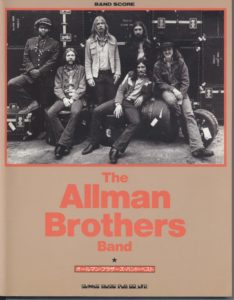 |
Allman Brothers Guitar Songbook |
| Allman Brothers, Best Of The (Piano, Vocal, Guitar) |
 |
Allman Brothers, Best Of The (Piano, Vocal, Guitar) |
| Allman Brothers, The – The Definitive Collection For Guitar Vol 1 with Tablature |
 |
Allman Brothers, The – The Definitive Collection For Guitar Vol 1 |
| Alma Redemptoris Mater |
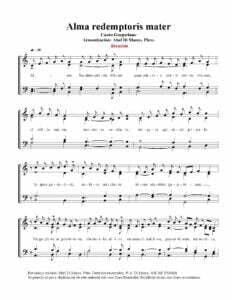 |
|
| Almeno tu nell’universo (Mia Martini) | ||
| Almir Chediak Ivan Lins Guitar Songbook Vol 2 |
 |
Ivan Lins Guitar Songbook Vol 1 by Almir Chediak |
| Alok – Hear Me Now Sheet Music |
 |
|
| Alone together (Howard Dietz & Arthur Schwartz) | Alone together (Howard Dietz Arthur SchwArtz) | |
| Alone Together (Musescore File).mscz | ||
| Alone Togheter Guitar Solo Transcription Jazz Standard |
 |
|
| Alphaville Forever Young (piano & Guitar) |
 |
Alphaville Forever Young (piano & Guitar) |
| Also Sprach Zarathustra Op. 30 – Richard Strauss (Musescore File).mscz | ||
| Alternative Rock Sheet Music Collection |
 |
Alternative Rock Sheet Music Collection |
| Always on my mind – Elvis Presley – easy arrangement for piano, with fingering |
 |
|
| Amadeus – W.A. Mozart (film score arr. for piano solo by D. Fox) |
 |
Amadeus – W.A.Mozart |
| Amadeus (original soundtrack piano solo arrangements) |
 |
Amadeus (Film score book) Piano Solos |
| Amalia Rodriguez FADOS Melodias De Sempre (GUITAR) |
 |
Amalia Rodriguez FADOS Melodias De Sempre (GUITAR) |
| Amando amando (Renato Zero) | ||
| Amar Pelos Dois (Salvador Sobral) | ||
| Amarcord (Nino Rota) | ||
| Amazing Grace – Tradicional (Piano ) |
 |
|
| Amazing Grace Traditional (Jazzy ver. sheet music) |
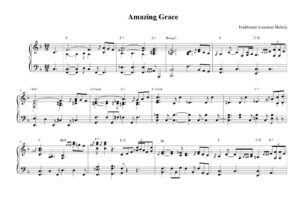 |
|
| Amazing Phrasing – Guitar 50 Ways to Improve Your Improvisational Skills (Guitar TABs Amazing Phrasing) (Tom Kolb) |
 |
Amazing Phrasing – Guitar 50 Ways to Improve Your Improvisational Skills (Guitar TABs Amazing Phrasing) (Tom Kolb) |
| Amelie Poulain – 6 pieces for piano – Yann Tiersen – Yann Tiersen |
 |
 |
| America (My Country ‘Tis of Thee Easy Piano Level 2 |
 |
|
| America Greatest Hits Piano Vocal Guitar chords |
 |
America Greatest Hits Piano Vocal Guitar chords |
| America Greatest Hits (piano & Guitar) |
 |
America greatest |
| America Horse With No Name Piano vocal | America Horse With No Name Piano vocal | |
| America’s Songs The Stories Behind The Songs Of Broadway, Hollywood, And Tin Pan Alley (Philip Furia, Michael Lasser) Book |
 |
|
| American Folk Songs For Guitar with Tablature |
 |
American Folk songs |
| American Folk Songs, My First Book of – Bergerac |
 |
|
| American Indian Melodies A. Farwell Op.11 (1901) |
 |
American Indian Melodies A. Farwell Op.11-min |
| American Pie (sheet music) |
 |
|
| American Popular Music (Book) by Larry Starr and Christopher Waterman |
 |
|
| Americana – Alegre, Magín (Guitarra) | Americana – Alegre, Magín (Guitarra) | |
| Amici Miei (Carlo Rustichelli) | ||
| Amor mio (Battisti) | ||
| Amore bello (Claudio Baglioni) | ||
| Amy Beach – Op.15 Four Sketches in Autumn |
 |
|
| Amy Grant – Breath Of Heaven | ||
| Amy MacDonald This Is The Life |
 |
AMY MACDONLAD |
| Amy Winehouse – Valerie |
 |
|
| Amy Winehouse – Valerie (sheet music) |
 |
|
| Amy Winehouse Amy Amy Amy |
 |
|
| Amy Winehouse Back To Black Songbook |
 |
Amy Winehouse Back To Black Songbook |
| Amy Winehouse Frank Songbook |
 |
Amy Winehouse Frank |
| Amy Winehouse I Heard Love Is Blind |
 |
|
| Amy Winehouse Just Friends |
 |
|
| Amy Winehouse Rehab |
 |
|
| Amy Winehouse You Know Im No Good |
 |
|
| An affair to remember (Harry Warren) | ||
| An American In Paris An George Gershwin (Concert Band)An American In Paris An George Gershwin (Concert Band) Arr. by Naohiro Iwai |
 |
|
| An American Tail – The Marketplace – James Horner | ||
| An Introduction To Bach Studies (eBook) |
 |
|
| An Irish Blessing (Musescore File).mscz | ||
| An Irish Blessing (SATB) Choral | An Irish Blessing (SATB) | |
| Analisis musical claves para entender e interpretar la Música (M. y A. Lorenzo) Español |
 |
|
| Analysis Of Tonal Music An Schenkerian Approach Allen Cadwallader and David Gagné (Book) |
 |
|
| Analyzing Bach Cantatas by Eric Chafe (eBook) |
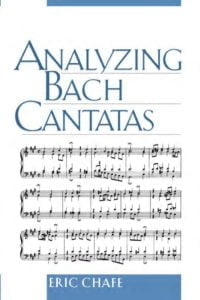 |
|
| Analyzing Schubert by Suzannah Clark (Cambridge Un. Press) (eBook) |
 |
|
| Anastacia Not That Kind Songbook |
 |
Anastacia songbook |
| Anastasia Once Upon A December arr. by John Brimhall (Piano Solo 2 Versions Easy And Intermediate) |
 |
|
| Anastasia Sheet Music songbook Piano & vocal |
 |
Anastasia Sheet Music songbook Piano & vocal |
| Ancora ancora ancora (Mina) | ||
| Ancora qui (Django Unchained) Elisa – Ennio Morricone | ||
| And the Waltz goes on (Anthony Hopkins) | ||
| Andante (from String Quartet op. 22) P. I. Tchaikovsky | ||
| Anderson Freire – So Voce Piano |
 |
|
| Andras Schiff – Music Comes Out Of Silence Book |
 |
|
| Andre Gagnon – L’air Du Soir |
 |
|
| Andre Gagnon – Le Reve De L’automne (sheet music Collection) |
 |
Andre Gagnon – Le Reve De L’automne (sheet music Collection) |
| Andre Gagnon – Les Jours Tranquilles | Andre Gagnon – Les Jours Tranquilles | |
| Andre Gagnon – Meguriai |
 |
|
| Andre Gagnon – Nelligan |
 |
|
| Andre Gagnon – Petite Nostalgie |
 |
|
| Andre Gagnon – Reves D’Automne | Andre Gagnon – Reves D’Automne | |
| Andre Gagnon – The Very Best Of Andre Gagnon (Sheet Music Songbook) |
 |
Andre Gagnon – The Very Best Of Andre Gagnon (Sheet Music Songbook) |
| Andre Gagnon Ciel D’Hiver |
 |
|
| Andre Gagnon Entre Le Boeuf et l’Ane Gris Musique Traditionelle |
 |
|
| André Gagnon L’air Du Soir |
 |
|
| Andre Gagnon Neiges |
 |
|
| André Gagnon Nelligan |
 |
|
| André Gagnon Origami |
 |
|
| André Gagnon Pensées Fugitives |
 |
|
| Andre Gagnon Pensées Fugitives |
 |
|
| André Gagnon Piano Solitude |
 |
Gagnon, André Piano Solitude |
| Andre Gagnon Prologue |
 |
|
| André Gagnon Selection Speciale de chansons (partitions musicales) |
 |
André Gagnon Selection Speciale de chansons (partitions musicales) |
| André Gagnon Un Piano Sur La Mer (Piano Solo Partition Sheet Music) | Gagnon André Un Piano Sur La Mer (Piano Solo Partition Sheet Music) | |
| Andre Popp Paul Mauriat Love Is Blue Piano Solo Arr. |
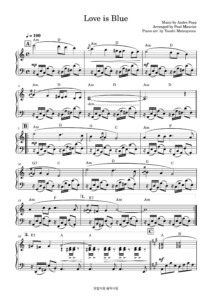 |
|
| André Previn – Play Like André Previn no. 1 |
 |
Andre Previn sheet music |
| Andre Previn – The Genius of (Piano Solos sheet music) |
 |
The genius of André Previn |
| Andre Rieu La Vie Est Belle (Songbook Collection As Performed By André Rieu) |
 |
Andre Rieu La Vie Est Belle (Songbook Collection As Performed By André Rieu) |
| Andrea Bocceli – Time To Say Goodbye | ||
| Andrea Boccelli – Time To Say Goodbye |
 |
|
| Andrea Bocelli Romanza songbook (Guitar & Voice) |
 |
Andrea Bocelli Romanza songbook |
| Andrea Bocelli – Anthology (songbook) |
 |
 |
| Andrea Bocelli – Con te partiro (Time to say Goodbye) Piano Solo arr | Andrea Bocelli – Con te partiro (Time to say Goodbye) Piano Solo | |
| Andrea Bocelli – Con te partiro (Time to say Goodbye) Piano Solo.mscz | ||
| Andrea Bocelli – The Best Of Songbook |
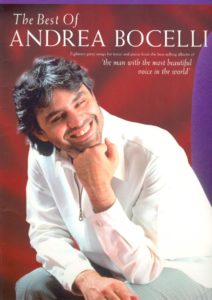 |
Andrea Bocelli best of |
| Andrea Bocelli Celine Dion The Prayer Easy Piano And Vocal By David Foster, Carole Bayer Sager, Alberto Testa And Tony Renis |
 |
|
| Andrea Bocelli Celine Dion – The Prayer – Easy Piano and Vocal by David Foster, Carole Bayer Sager, Alberto Testa and Tony Renis.mscz | ||
| Andrea Bocelli Cieli Di Toscana (Piano, guitar & Vocal) |
 |
Andrea Bocelli Cieli Di Toscana |
| Andrea Bocelli Sogno Songbook |
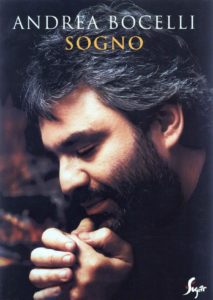 |
Andrea Bocelli sogno |
| Andrea Bocelli The Prayer |
 |
Lennie Tristano discography
Intuition (1946–52; Box 4 CD + Booklet 40 S.(en), compil. 2003 Proper/mcps)
Complete Recordings of Charlie Parker with Lennie Tristano (1947–51, ed. 2006)
Live at Birdland 1949 (Jazz Records 1979, 1990)
Live in New York (1949; with Lee Konitz, Warne Marsh, Billy Bauer u. a., compil. 2004 by Jazz Door)
Crosscurrents Capitol 1949 (als Album veröffentlicht erst 1972)
Descent into the Maelstrom, Inner City 1952
Lennie Tristano (Atlantic, 1956)
The New Tristano (Atlantic, 1961)
Concert in Copenhagen (aufgenommen 1965, Jazz Records 1997)
The Duo Sessions (Dot Time, ed. 2020)
Personal Recordings 1946-1970 (Mosaic/Dot Time, ed. 2021)Collection
The Complete Atlantic Recordings of Lennie Tristano, Lee Konitz & Warne Marsh (1955-58) – (Mosaic – 1997) – 10 LPs oder 6 CDs – Lennie Tristano p mit Lee Konitz, Gene Ramey, Art Taylor, Peter Ind, Jeff Morton dm –
Lee Konitz as mit Sal Mosca, Peter Ind, Dick Scott dm, Billy Bauer, Arnold Fishkind b, Jimmy Rowles, Leroy Vinnegar, Shelly Manne, Don Ferrara – Lee Konitz & Warne Marsh ts mit Sal Mosca, Billy Bauer, Oscar Pettiford, Kenny Clarke, Ronnie Ball p – Warne Marsh mit Ronnie Ball, Paul Chambers, Philly Joe Jones, Paul Motian